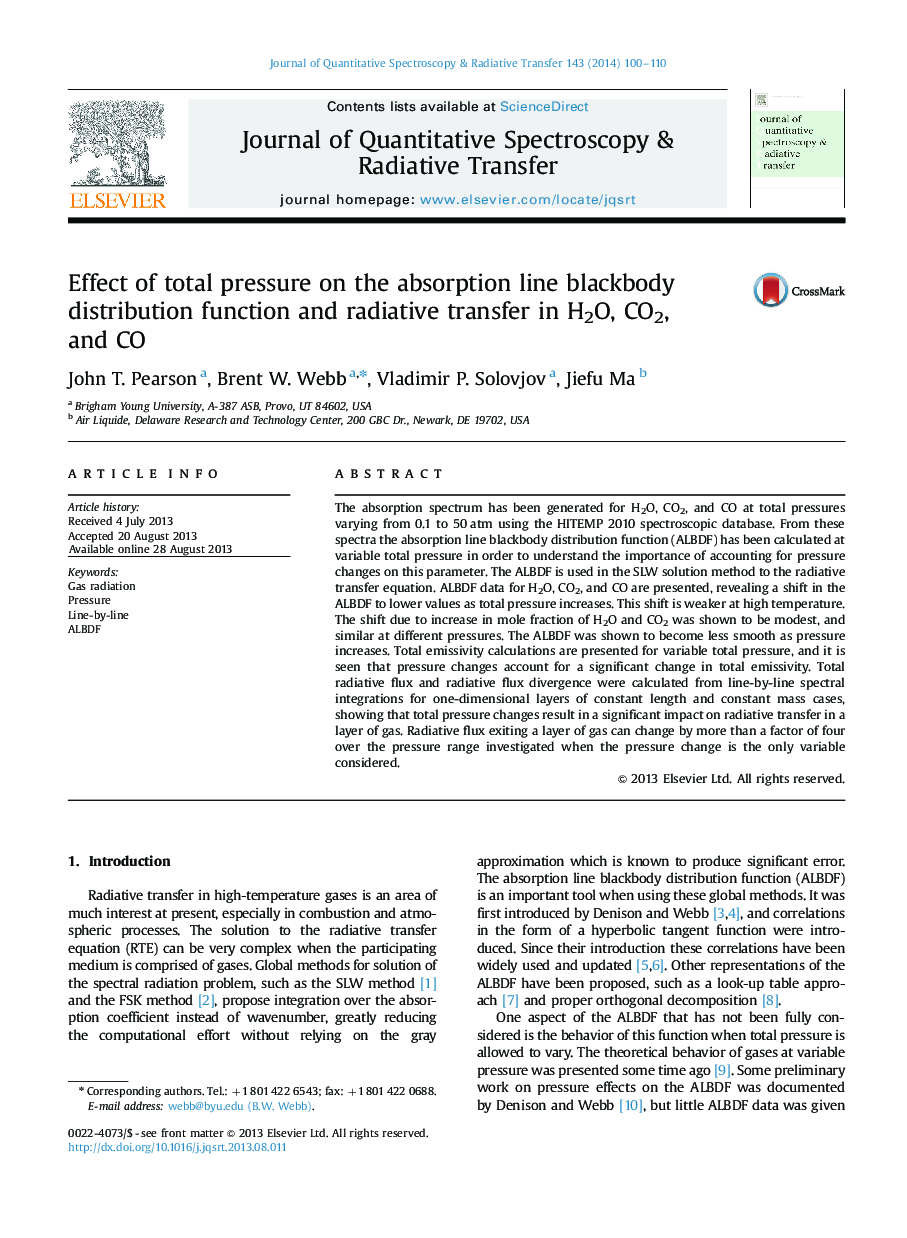| کد مقاله | کد نشریه | سال انتشار | مقاله انگلیسی | نسخه تمام متن |
|---|---|---|---|---|
| 5428347 | 1508672 | 2014 | 11 صفحه PDF | دانلود رایگان |

- The absorption spectrum is generated for H2O, CO2, and CO.
- Temperature range is 400-3000Â K, total pressure range from 0.1Â atm to 50Â atm.
- The ALBDF is generated from the absorption spectrum.
- The ALBDF is smoother, and decreases as total pressure is increased.
- Pressure effect on radiative transfer is explored from line-by-line calculations.
The absorption spectrum has been generated for H2O, CO2, and CO at total pressures varying from 0.1 to 50Â atm using the HITEMP 2010 spectroscopic database. From these spectra the absorption line blackbody distribution function (ALBDF) has been calculated at variable total pressure in order to understand the importance of accounting for pressure changes on this parameter. The ALBDF is used in the SLW solution method to the radiative transfer equation. ALBDF data for H2O, CO2, and CO are presented, revealing a shift in the ALBDF to lower values as total pressure increases. This shift is weaker at high temperature. The shift due to increase in mole fraction of H2O and CO2 was shown to be modest, and similar at different pressures. The ALBDF was shown to become less smooth as pressure increases. Total emissivity calculations are presented for variable total pressure, and it is seen that pressure changes account for a significant change in total emissivity. Total radiative flux and radiative flux divergence were calculated from line-by-line spectral integrations for one-dimensional layers of constant length and constant mass cases, showing that total pressure changes result in a significant impact on radiative transfer in a layer of gas. Radiative flux exiting a layer of gas can change by more than a factor of four over the pressure range investigated when the pressure change is the only variable considered.
Journal: Journal of Quantitative Spectroscopy and Radiative Transfer - Volume 143, August 2014, Pages 100-110